Woman robbed of right arm in horrifying farming accident 20 years ago gets brain-powered bionic arm (and it’s so good she can now use a screwdriver!)
Remarkable video shows a woman using a bionic arm so sensitive it can hold a screwdriver and coins using just the power of her thoughts.
The Swede, known only as Karin, suffered a devastating farming accident 20 years ago in which she lost her right arm.
For the past two decades, she suffered from excruciating phantom pains that left her feeling like she “constantly had her hand in a meat grinder.”
Karin also found conventional prostheses to be uncomfortable and unreliable.
Hoping to create an alternative that can be fully attached to a stump and provide better freedom of movement, a team of engineers and surgeons from Sweden, Australia, Italy and the United States have developed an improved prosthetic limb.
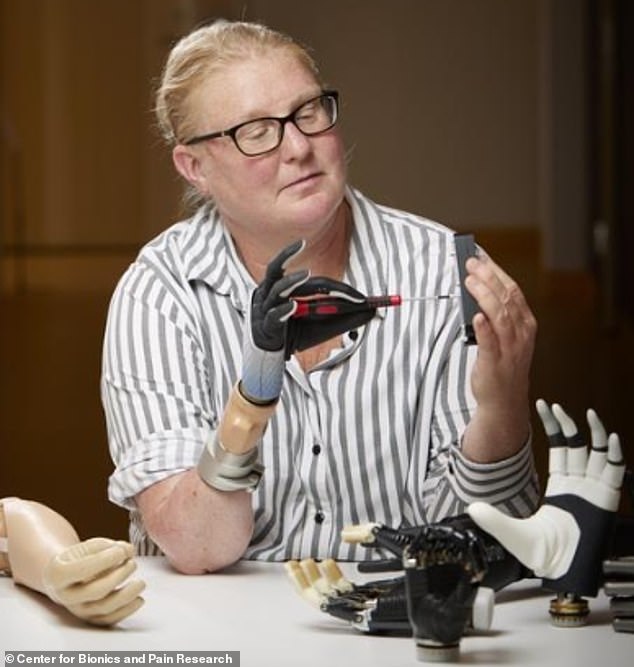
The woman, known only as Karin (pictured), suffered a devastating farming accident twenty years ago in which she lost her right arm. For the past two decades, she suffered from excruciating phantom pains that left her feeling like she “constantly had her hand in a meat grinder.”
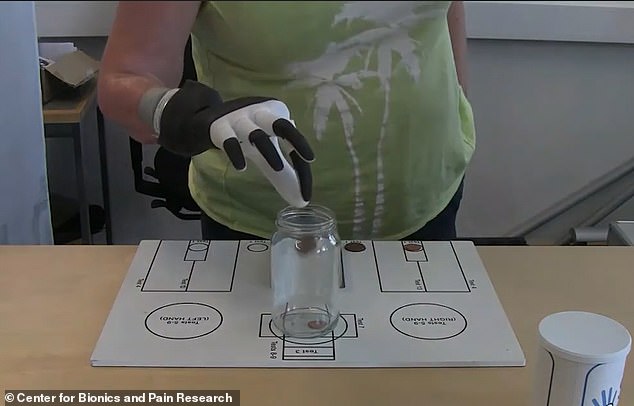
But a team of engineers and surgeons from Sweden, Australia, Italy and the United States developed a prosthetic limb and surgically attached it permanently to her bone. Electrodes implanted into their nerves and muscles allow the device to connect to their nervous system
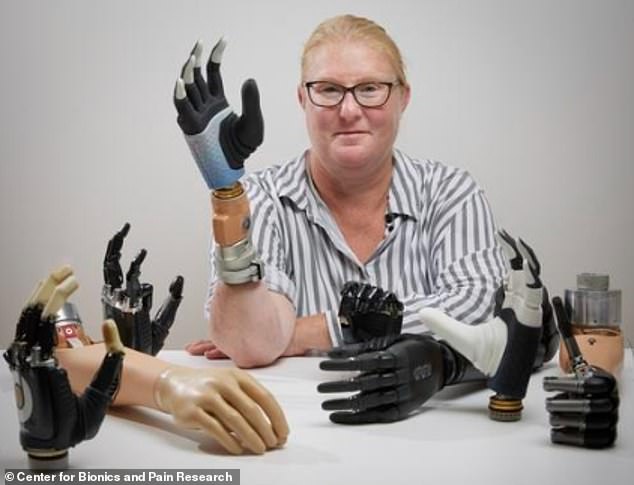
Before the operation, Karin (pictured) said she found traditional prostheses uncomfortable, unreliable and unhelpful in daily life. She added: “It felt like I constantly had my hand in a meat grinder, which led to high levels of stress and I had to take high doses of various painkillers.” “For me, this research meant a lot because “It gave me a better life.”
Two titanium prongs were permanently implanted into her bones and served as a connection point between her arm and the prosthesis.
This type of surgery – called osseointegration – is key to the new bionic technology developed by Prensilia, an Italian prosthetics company.
It replaces the need for a socket to attach an amputee’s limb to their prosthesis, which can be uncomfortable, ill-fitting and difficult to attach and remove.
Next, electrodes were implanted into her severed nerves and arm muscles and attached to her arm.
This allows the device to receive signals emanating from their motor commands – the biological process that triggers the body’s movements.
Actions – such as picking up a glass or closing a suitcase zipper – are then played back in real time with the aim of making everyday life easier for amputees.
Karin’s operation took place “years ago” but is only now being demonstrated by experts.
About her phantom limb pain, a phenomenon that baffles doctors, she said: “It felt like I constantly had my hand in a meat grinder, which led to high levels of stress and I had to take high doses of different things Take painkillers.”
“This research meant a lot to me because it gave me a better life.”
The NHS does not currently fund the use of Karin’s advanced bionic arm.
However, NHS England announced last November that dDozens of amputees would now have access to similar bionic arms that can mimic real hand movements.
Previously there were prosthetics The NHS were basic models with limited opening and closing movements. Others were cosmetic in nature and had no practical function.
Experts said the bionic arms, estimated to cost between £25,000 and £80,000, could be used by as young as nine years old.
Eligible patients must have enough remaining upper arm muscles to send signals that produce intuitive movements.
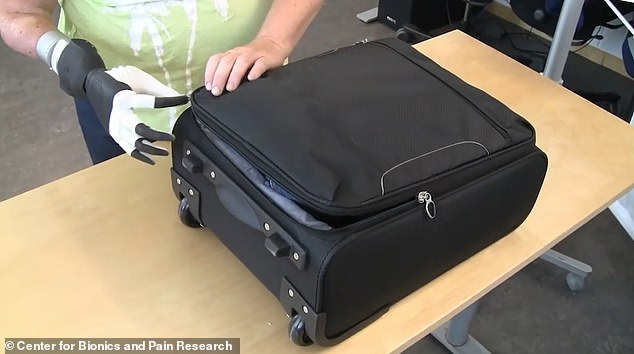
The device converts electrical impulses from the muscles in the upper arm into movements powered by motors in the bionic arm, allowing a user to hold a glass or close a suitcase. However, the key to the new bionic technology developed by Prensilia, an Italian prosthetics company, is osseointegration
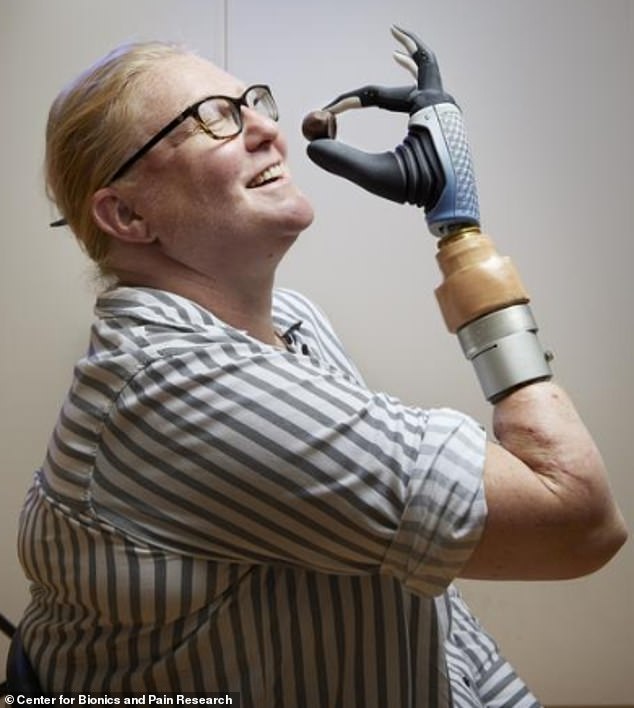
However, the robotic hand used by Karin has unique motor and sensory components that allow the user to perform 80 percent of everyday activities, the researchers claim. During the surgery, Karin’s nerves and muscles in the remaining part of her arm were rearranged to provide motor control information to the prosthesis
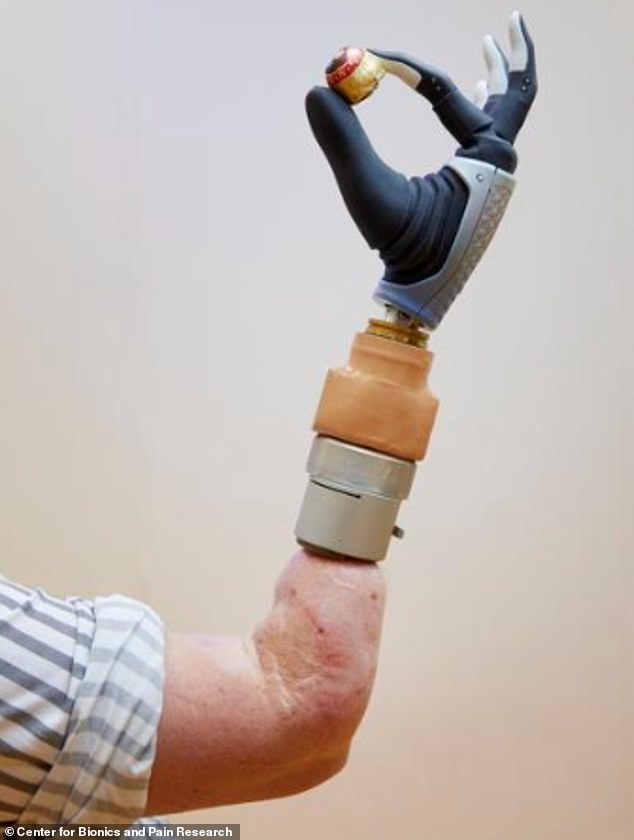
Professor Max Ortiz Catalan, who led the research, said: “Karin was the first person with a forearm amputation to receive this new concept of a highly integrated bionic hand that can be used independently and reliably in daily life.”
Professor Max Ortiz Catalan from the Bionics Institute in Australia said: “Karin was the first person with a forearm amputation to receive this new concept of a highly integrated bionic hand that can be used independently and reliably in daily life.”
“The fact that she has been able to use her prosthesis comfortably and effectively in daily activities for years is promising evidence of the potentially life-changing possibilities of this novel technology for people facing limb loss.”
Meanwhile, Professor Rickard Brånemark, associate professor at the University of Gothenburg, who led the operation, said Karin’s results “represent an important milestone for the field of advanced limb reconstruction as a whole.”
